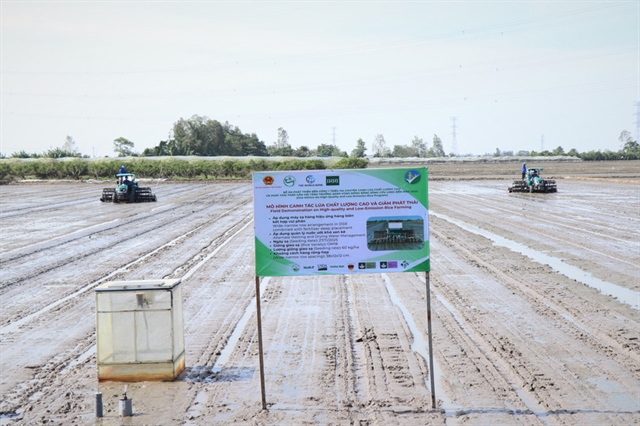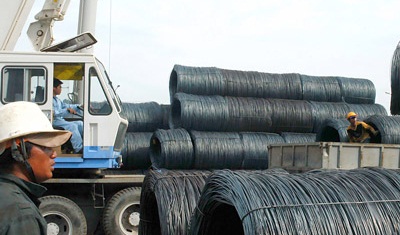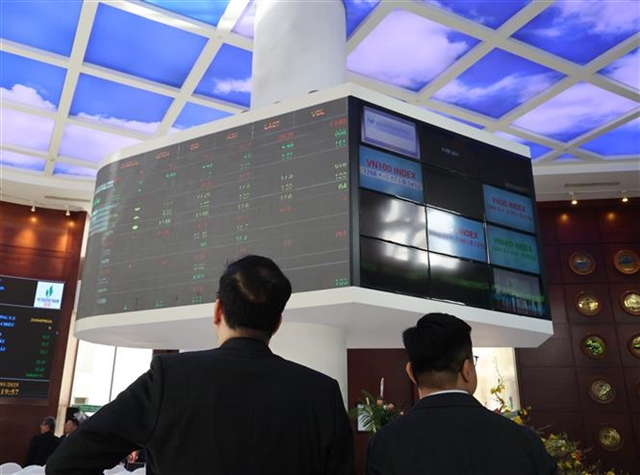 Economy
Economy

Renovating, upgrading and rearranging production lines are important for businesses to save energy and improve productivity as well as product quality, heard attendants at a forum held in Hà Nội on Wednesday.

|
| The country has striven to reduce energy consumption in energy-intensive industries such as steel production. — Photo scp.gov.vn |
HÀ NỘI — Renovating, upgrading and rearranging production lines are important for businesses to save energy and improve productivity as well as product quality, heard attendants at a forum held in Hà Nội on Wednesday.
A report from the Ministry of Industry and Trade at a forum on saving energy showed energy consumption in the industrial sector accounted for more than 47 per cent of the country’s total consumption. Currently, primary energy sources do not meet the economy’s energy demand. Việt Nam has to import coal for electricity generation and will import liquefied petroleum gas (LPG) from 2023.
Hoàng Quốc Vượng, deputy minister of Industry and Trade, said with GDP growth of 7 per cent, the country would need 235 billion kWh electricity by 2020, 352 billion kWh by 2025 and 506 billion kWh by 2035. Although the growth rate of electricity demand in the future would be much lower than before, at about 8.5 per cent in 2021-25 and 7.5 per cent in 2026-30 (those in the previous period was more than 12 per cent year), the power demand would still very high.
Việt Nam’s electricity system has about 54,000MW including fossil and renewable energy. The country will need some 60,000MW for power demand in 2020 and 130,000MW by 2030.
“This has been a big challenge for the country’s energy sector as many power projects have seen slow progress. It is not easy to arrange capital for new investment projects on power generation and grid. Meanwhile, coal and gas for power generation have been imported," he said, adding that using energy effectively would contribute to ensuring electricity supply.
Statistics from the ministry’s Energy Efficiency and Sustainable Development Department revealed that in 2011-15, Việt Nam saved 5-8 per cent of its total energy consumption, equivalent to 11-17 million tonnes of oil.
Consumption in energy-intensive industries also declined gradually in this period, such as steel production (down 8.09 per cent), cement (6.33 per cent) and textiles (7.32 per cent).
Trịnh Quốc Vũ, the department’s deputy director, said according to the national programme on economical and efficient energy use for 2019-30, Việt Nam plans to reduce the energy consumption by up to 16.5 per cent in the steel sector, 10 per cent in chemical manufacturing, 11 per cent in cement production and 24.81 per cent in plastics production compared to 2015-18.
Experts said applying new technologies is an effective way to save energy in the industrial production amidst surging demand and problems in power supply.
Assoc. Prof., Dr. Trần Đình Thiên, former Director of the Việt Nam Institute of Economics, said sustainable and efficient energy use needs special attention, warning of a surge of old and energy wasting technologies in Việt Nam as many investors shift projects to the country to avoid the impact of US-China trade tension.
Other participants said apart from promoting energy saving habits, new technological solutions should be applied to improve energy efficiency.
Chairman of the Việt Nam Automation Association Nguyễn Quân, also former Minister of Science and Technology, said about 30 per cent of the electricity output is currently used for lighting. If half of the amount of electricity consumed in this field is saved by using LED lights, it is equivalent to the energy generated by a 4,000MW nuclear power plant. New technologies will also help save about 10 per cent of the electricity used by the 10 million air conditioners nationwide.
Đỗ Hữu Hào, chairman of the Việt Nam Energy Conservation and Energy Efficiency Association, also highlighted the need to renovate technology and improve productivity to save energy, calling for activities to assist businesses to apply energy efficiency solutions. — VNS




